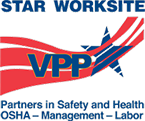Is a Trench/Excavation a Confined Space?
Here’s a common question that we get here at Roco – Is a trench a confined space?
The short answer, under normal circumstance, is “no”. In fact, this is one of those instances where OSHA is pretty clear about it. OSHA’s 1926 Subpart AA addresses Confined Spaces in Construction, specifically, 1926.1201 – Scope states “This standard does not apply to construction work regulated by Subpart P (Excavations)."
Unfortunately, the answer isn’t that cut and dry. So, let’s “dig” into this a little more and “unearth” some of the nuance in this “space." (Completely unapologetic about puns)
 Similarities in Excavations and Confined Spaces
Similarities in Excavations and Confined Spaces
While excavations are typically not categorized as confined spaces, the numerous similarities between them make this an easy point of confusion. Below are some of the key areas where excavations and confined spaces overlap.
1. Limited Means of Access/EgressBoth confined spaces and excavations often present restricted entry and exit points. This limitation can make it more difficult for workers to get in and out quickly, which is especially critical in the event of an emergency. Access to confined spaces may be through small openings, while trenches can have steep or unstable walls that limit easy exit.
2. Large Enough to Enter and Perform WorkBoth types of spaces must be large enough for a worker to enter and carry out their job. In the case of excavations, workers often need to physically enter the trench to perform tasks such as installation, repairs, or inspections, just like they would in a confined space.
3. Not Designed for Continuous Human OccupancyNeither excavations nor confined spaces are designed for workers to occupy them continuously. These spaces are temporary work zones, and prolonged exposure can increase the risk of exposure to dangerous conditions such as poor atmospheric conditions.
4. Requirements for Atmospheric TestingIn both confined spaces and excavations, atmospheric testing is essential to ensure that conditions are safe for workers. Tests for oxygen levels, toxic gases, or other hazardous substances are common practices in confined spaces, and these same tests can be necessary in excavations under certain circumstances, especially if hazardous atmospheres are reasonably expected to be present.
"In both confined spaces and excavations, atmospheric testing is essential to ensure that conditions are safe for workers."
5. Emergency Response RequirementsBoth types of spaces require specific rescue procedures in place to safely extract workers if they become injured or trapped. Rescue plans must be prepared, with the proper equipment and trained personnel ready to respond in case of an emergency. These plans are necessary because both confined spaces and excavations can pose a life-threatening situations if an emergency arises.
6. Hazards and FatalitiesExcavations and confined spaces are both associated with a high risk of fatalities and serious injuries. While the risks may vary depending on the nature of the work and the environment, both contain similar (and different) hazards that are a serious cause for safety and health concerns.
If you noticed, the first 3 similarities outlined in this article are the defining characteristics of a confined space in 1910.146 – Permit Required Confined Spaces. Because of these similarities, many construction companies and facilities opt to treat excavations like confined spaces when it comes to safety measures, sometimes requiring confined space entry permits and specific safety protocols before entering these areas.
Differences
 Excavations and confined spaces are different in nature. A confined space is a structure that meets three specific criteria: it must be large enough to enter, have limited means of access and egress, and not be designed for continuous occupancy. Examples include tanks, silos, vessels, and many other types of enclosures. In contrast, excavations are man-made cuts, cavities, trenches, or depressions in an earth surface, formed by earth removal and typically don’t meet the definition of a confined space, even though they may present similar risks.
Excavations and confined spaces are different in nature. A confined space is a structure that meets three specific criteria: it must be large enough to enter, have limited means of access and egress, and not be designed for continuous occupancy. Examples include tanks, silos, vessels, and many other types of enclosures. In contrast, excavations are man-made cuts, cavities, trenches, or depressions in an earth surface, formed by earth removal and typically don’t meet the definition of a confined space, even though they may present similar risks.
Regulatory standards also vary between these two types of work. Confined spaces are governed by OSHA’s 1910.146 and 1926 Subpart AA which addresses hazards and entry procedures, while excavations fall under 1926 Subpart P, which addresses safety concerns like cave-ins and structural integrity.
When an Excavation is a Confined Space
 Although excavations are generally not confined spaces, certain conditions may cause an excavation to be considered a confined space under specific circumstances. For example, if the excavation is deep enough to encase a structure like a large tank or pipe that meets the qualifications of a confined space, then the area within the excavation would need to meet the confined space entry criteria for the structure itself. In such cases, the space within the excavation (the confined space) would be regulated by the standards for confined space entry, even though the excavation itself remains governed by excavation safety standards. This means that workers might still need to follow confined space entry protocols, including testing the air quality and using specialized equipment and procedures for entry and rescue, while also adhering to excavation safety standards to prevent the risk of cave-ins or other earth-related hazards.
Although excavations are generally not confined spaces, certain conditions may cause an excavation to be considered a confined space under specific circumstances. For example, if the excavation is deep enough to encase a structure like a large tank or pipe that meets the qualifications of a confined space, then the area within the excavation would need to meet the confined space entry criteria for the structure itself. In such cases, the space within the excavation (the confined space) would be regulated by the standards for confined space entry, even though the excavation itself remains governed by excavation safety standards. This means that workers might still need to follow confined space entry protocols, including testing the air quality and using specialized equipment and procedures for entry and rescue, while also adhering to excavation safety standards to prevent the risk of cave-ins or other earth-related hazards.
"...if the excavation is deep enough to encase a structure like a large tank or pipe that meets the qualifications of a confined space, then the area within the excavation would need to meet the confined space entry criteria for the structure itself."
Conclusion
So, is a trench/excavation a confined space? Usually, not. OSHA clearly states such in the construction confined spaces standard. However, with all the overlap outlined above, it’s no wonder companies get “buried” in the confusion. At the end of the day, the most important thing is to realize that both confined spaces and excavations have many similar hazards and lead to numerous injuries and fatalities in the workplace each year. Regardless of your workplace’s policies and procedures, ensure that measures are in place to protect workers from the hazards inherent to their specific job scope and have a rescue plan in place for the unfortunate event that the unexpected happens.
Need help with your Trenching/Excavation Program?
Check out our Trench competent person course.
Need to enhance your rescue team's capabilities?
Take a look at our Trench Rescue course here.
 Chris McGlynn, M.S., CSP is a Certified Safety Professional and Nationally Registered Paramedic who serves as the Director of Safety and VPP Coordinator for Roco Rescue. He is a Director-at-Large on the VPPPA Region VI Board of Directors and Secretary of the American Society of Safety Professionals Region IV Board of Directors. Chris also represents ASSP on the ANSI Z117 Confined Space and Z390 Hydrogen Sulfide Training Standard Development Committees and is an active OSHA Special Government Employee within the Voluntary Protection Program. He is currently working towards a Ph.D. in Occupational Safety & Health through West Virginia University's Statler College of Engineering.
Chris McGlynn, M.S., CSP is a Certified Safety Professional and Nationally Registered Paramedic who serves as the Director of Safety and VPP Coordinator for Roco Rescue. He is a Director-at-Large on the VPPPA Region VI Board of Directors and Secretary of the American Society of Safety Professionals Region IV Board of Directors. Chris also represents ASSP on the ANSI Z117 Confined Space and Z390 Hydrogen Sulfide Training Standard Development Committees and is an active OSHA Special Government Employee within the Voluntary Protection Program. He is currently working towards a Ph.D. in Occupational Safety & Health through West Virginia University's Statler College of Engineering.




